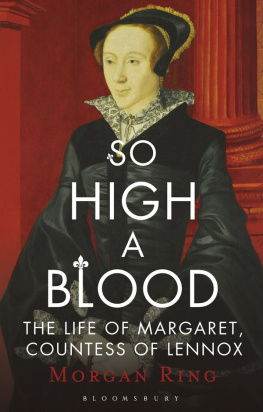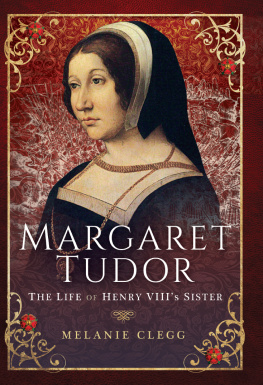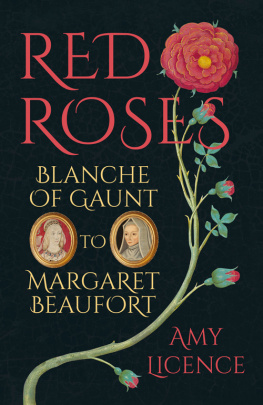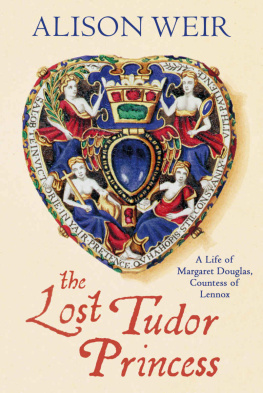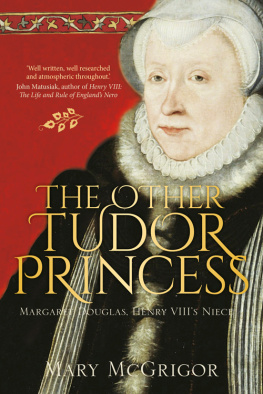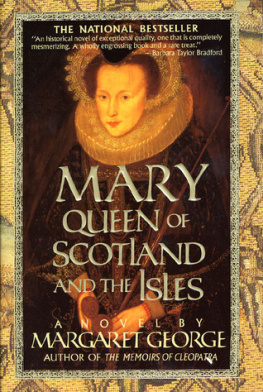SO HIGH A BLOOD
For my parents
Contents
DATES: Dates are given in Old Style, with the year taken to have begun on 1 January rather than 25 March.
SPELLING: Spelling and punctuation have been modernised throughout the text, though original spellings for the titles of printed works are retained in the Notes and Bibliography. I have followed convention by using the English spelling of Stewart for both the Scottish royal family and the earls of Lennox.
TRANSLATIONS: Translations from Latin, French and Italian are my own. Translations of the Scots mottoes on the Lennox Jewel are from Kirsten Aschengreen Piacenti and John Boardmans Ancient and Modern Gems and Jewels in the Collection of Her Majesty the Queen (London: 2008, pp. 1835).
There is a locket in a cabinet in Edinburgh, small enough to fit into a childs palm but burdened with the weight of ancient jewels and dreams. The woman who commissioned it some 450 years ago planned each detail of its intricate symbolism: the heart-shaped frame; the unsettling images of dying knights, captive queens and hidden skulls; the cryptic Scots mottoes twisting around its edges.
Once, ambassadors to the court of England had praised the womans beauty, and one unfortunate young courtier had died in the Tower of London for daring to love her. By the time she created the locket, she was haggard, worn by prison, loss and fear, her merry half-smile flattened into thin-lipped resolution. For the white enamel border surrounding the lockets face she chose the legend Qvha hopis stil constantly vith patience sal obteain victorie in yair pretence: Who hopes still constantly with patience shall obtain victory in their claim a prediction, a promise and a prayer.
The woman was Margaret Douglas, Countess of Lennox. Half-English and half-Scottish, she had arrived at the court of her uncle, Henry VIII, amidst the Christmas revels of 1530. In the four decades that followed, she transformed herself into a powerful, political noblewoman wielding influence in both England and Scotland. As the Protestant Reformations unfolded across the British Isles and the Tudor line of succession remained in constant doubt, she envisioned a united England and Scotland, ruled by one royal family, sharing a common Catholic faith. When her niece Mary, Queen of Scots, was widowed in France, Margaret helped set in motion shattering events that would see her descendants succeed to the crowns of England, Ireland and Scotland.
Most of the sixteenth-century women who made their way into the records of the era were born into wealthy, powerful families. They were expected to play a part, with a different leading man for each act of their lives: daughter, wife, mother. There were different obligations attendant on each of these positions, and women were judged by how successfully they met them. There was conventional praise for women who came up to expectations and conventional censure for those who did not: the good were all virtuous, beautiful and wise; the bad were vicious, domineering and blind to their own foolishness.
Margarets friends often spoke of her as though she had never had a political idea in her life and simply wanted to see her children married as well as any devout Catholic mother could wish. She understood her stock part perfectly and took care to portray herself as a model noblewoman: irreproachably loving wife and mother, competent to manage the people and finances of large family estates, but unsuited to high politics. Her enemies, on the other hand, talked about her as though she were a sort of fairy-tale villainess. In their descriptions, she was a woman who consulted witches and fortune-tellers, dominated her weak-willed husband while entertaining the affections of other men, and plotted to foist her feckless, spoiled son Henry, Lord Darnley, on the ill-starred Queen of Scots.
Her contemporaries disagreed so deeply about Margarets character that it is no shock to discover she has remained overlooked and enigmatic one more lovely Tudor rose on the royal family tree, or horrible lord Darnleys horrible mother. The truth was that the character shorthands and commonplaces of the sixteenth century could not capture her. Margaret Douglas, a woman who made unfixable mistakes but also realised tremendous ambitions, was simply too human and too complex. To recover the Countess of Lennox, we must return both to the accounts of her actions and to her own words and writings. Through them, a story emerges. That story, of constant hope and dynastic dreams, of great triumph and terrible grief, was played out largely in secret, enacted in isolated manors and palace corners by spies, intelligence-gatherers, and by a woman unshakeably convinced that her descendants would one day rule throughout the British Isles.
That day at Bosworth in late August 1485 marked the violent end to a tumultuous seventy years. In the aftermath of Henry Vs victory at Agincourt in 1415, it appeared that the House of Lancaster would rule a lasting cross-Channel empire as undisputed monarchs of both England and France. But that imperial vision faded during the reign of the great kings heir, the devout, sickly Henry VI. England surrendered all its French territories save Calais perhaps for ever. The Lancastrians lost their crown to their Yorkist rivals, who were soon mired in usurpation, murder and rebellion. By 1485, a generation of English and Welsh people had lived and died without knowing a stable monarchy.
By strict dynastic reckoning, the crown did not belong to Henry Tudor. His father Edmund Tudor, first Earl of Richmond, had had no claim to it. His mother, Margaret would always face pretenders to his throne he had obvious advantages: allies; an army; and, it seemed that day at Bosworth, the blessing of God.
With an eye for the practical as well as the symbolic, twenty-seven-year-old Henry asserted his rule. He held his coronation in October 1485, becoming Henry VII, anointed King of England and Lord of Ireland, crowned with the same regalia and by the same rites as any of his predecessors.
Over the ten years that followed, Henry and Elizabeth had three more children who lived to adulthood: Margaret, Henry and Mary. For the king, these young princes and princesses meant that his familys dynasty would survive him and that he could make marriage alliances with European powers, vital considerations for a new royal house trying to signal its permanence and prestige.
Henrys first move was to shore up Englands friendship with Spain, enormously wealthy and newly centralised under the rule of Ferdinand
While the diplomats wrangled, Henrys queen, Elizabeth, gave birth to a daughter at nine oclock in the evening of 28 November 1489. Two days later, the royal family and aristocracy gathered to see the girl brought to the porch of St Margaret
In the religion of late medieval England, there was a saint for every place, profession and occasion, a patron who could intercede with God on behalf of mortal Christians. The christening connected the newborn princess with two particular saints among this vast communion. It took place on the morning of the feast of St Andrew, the fisherman-turned-apostle who had been martyred on a saltire and adopted as the patron of Scotland, and the child was given a name that she shared with the eleventh-century Scottish queen who had become one of that countrys most beloved saints. This proved a lucky pair of coincidences,
It was an idea with possibilities. If the scheme worked, it would secure Englands northern border and draw Scotland into the Anglo-Spanish alliance
Scotland faced its own political trials. The Stewart dynasty had held power for more than a century, but its kings had tended to accede young and die young. Throughout the fifteenth century every single Stewart ruler had come to the throne as a child. In these circumstances, Scotlands nobles usually became responsible for governing the country, with the late kings widow keeping custody of their child-king son, and either the next-in-line or specially appointed senior nobles acting as Regents. This string of minorities, added to the fact that the crown lacked the money to enforce its will without the support of the nobility, meant Scottish aristocrats were powerful figures.
Next page
